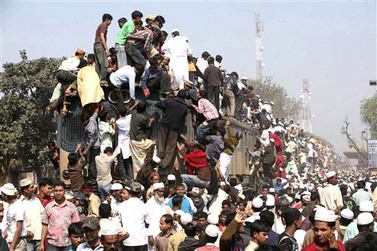Transit City is funded, let's get it built, and focus on the DRL. I have not see you, and others even consider this idea.
I have considered this idea. And then I dismissed it as being the incorrect way to approach it. DRL is Priority #1, I don't think many of us disagree on that. It's the single most important piece of transit infrastructure this city will build in the next 30 years. However, let's review the TTC's priorities in terms of transit projects:
1) Spadina Subway Extesion
2) SELRT
3) Eglinton LRT
4) Scarborough LRT
5) Finch West LRT
6) Don Mills LRT
7) Scarborough-Malvern LRT
8) Jane LRT
9) Waterfront West LRT
10) Yonge Subway Extension
11) DRL
Am I the only one that thinks that something is a bit off here? Since when did Network Priority #1 become Funding Priority #11? If you are as big of an advocate of the DRL as you say you are, you should realize it should be at the top of the list, not all the way down at #11.
I can maybe see the need for the Eglinton LRT and the Scarborough LRT (but preferably B-D subway extension to STC) going ahead of the DRL just because of network urgency or timeline issues. However, the fact that the SELRT is #2 on the list and that the DRL is BEYOND on the backburner, irks me to no end. Projects that have under a 10% chance of actually getting built are still higher on the TTC's to-do list than the DRL, as the Metrolinx RTP still has all of Transit City in the 15 year portion of the RTP, while the DRL is relegated to the 25 year plan. Transit City should be built as a supplement to the DRL, not the other way around.
PS: I realize that #6-9 haven't been prioritized in terms of order, but they're interchangable in those spots.
Last edited:






